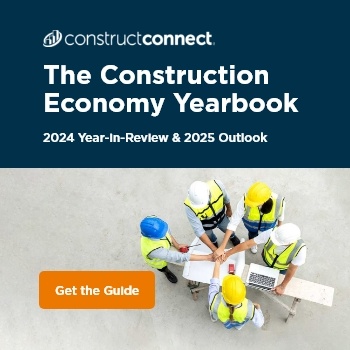The world of construction often has been labeled as conservative regarding potential advances in technology and technological applications. But social pressures and business competition sometimes forces growth, catalyzing companies to find new ways to appeal to clients, reduce costs and protect employees. Below are just a few things that might disrupt how construction companies operate in the future. In fact, some already have done that.
Google Tango
Google’s Tango product admittedly is a product rather than a trend. But its influence has the potential to be vast. When Google first released Tango as part of a collaboration of Lenovo last fall, it was marketed to the masses as an augmented reality option for interior design. Different from other 3D computer sensing products, Tango was designed specifically for mobile phones and tablets. While this may have seemed like a gimmick for consumers, it has the potential to become an effective application in the architecture, engineering and construction (AEC) industries.
Tango’s software combines three separate types of functionality. By utilizing motion tracking, accelerometer and gyroscope data, it can acutely track the device’s movements relative to features of the environment. As it continues to move, it can record and store environmental data in a map for later use. It also allows for metadata, such as notes or highlighting points of interest. The technology also has depth perception, and can detect distances, sizes and surfaces accurately within the environment.
The technology currently is limited to detailed interior environments, but that still leaves it with a bevy of applications, including use with underground utilities and building interiors nearing completion. Design outliers could be more efficiently caught and a more interactive presentation would be possible with clients. Scans of anything needed to be replaced could be used to more accurately utilize modular replacement parts. And since annotation is possible, building upon the designs for future projects would be highly advantageous.
Perhaps most importantly, this technology could disrupt AEC methodology due to its portability and cost. Any employee could potentially have an augmented reality (AR) smartphone, at a cost less than many other AR and Building Information Modeling technologies.
Construction Exoskeletons
No, we’re not talking about having a manned robot warrior such as Iron Man on a project—at least not yet. Current exoskeletons don’t use any power at all. Instead, those work with classic engineering elements, such as counterweights, harnesses and metal tubing. When worn by a worker, previous items that were too heavy to pick up or handle for an extended period could become weightless. With greater acceptance, these exoskeletons could have modules specific for certain tools and brands.
While there may be skepticism toward any real need for an exoskeleton, the benefits lie in their power source free flexibility, reduced maintenance costs and initial purchase.
Drones and Unmanned Aerial Vehicles
Drones have been around for multiple years and their rise in construction has been forecast before. The difference now is drones are finally at a level that is not only smart, but more versatile and affordable than ever. If an unmanned aerial vehicle isn’t under consideration yet at your company, there’s a risk of falling behind the competition.
Petillo Incorporated has integrated the use of drones to effectively conduct real-time site surveys and track progress over the course of a project. With the combination of mapping, aerial photos and 3D imaging, it has been a benefit for worker safety, increasing efficiency and even marketing.
Brands such as DJI, Yuneec and 3DR all are offering drones that range from under $1,000 to under $5,000. Spend more, and it’s possible to get drones that can transport up to 100 pounds and have heavy-duty wind stabilization. With GPS-control and often over a mile of controllable range, we’re looking at more efficient systems of transporting materials or quickly transporting a medical kit across a crowded worksite.
Augmented and Virtual Reality for Training
NASA and the aviation world were once considered to be on the bleeding edge with flight simulators that allowed pilots to safely learn how to fly shuttles and land modules without running the risk of death or damaging billion-dollar equipment. According to OSHA, over 6 million people are on construction sites daily. With construction still being a high-risk livelihood, and equipment becoming more advanced (and therefore even more expensive, at least for now), VR training is a logical consideration.
VR programs can create convincing scenarios that would prepare workers. These could mimic operating real power tools and even heavier equipment prior to stepping on a jobsite. More importantly, situations that require split-second decision-making could be enacted, preparing a worker’s reflexes for potentially dangerous situations.
Biological Building Materials
Possibly the concept furthest away from fruition, some of the world’s most daring engineers and scientists, such as those at the Defense Advanced Research Projects Agency (DARPA), are working toward creating engineered living materials. As wild as this may sound, it has legitimate potential for real-world application in addition to greener manufacturing processes. Multiple universities are clawing toward self-healing concrete. One company is creating bricks from sand and bacteria that will act like coral. These take four days to grow and are strong enough to use in various commercial builds.
The push toward greener construction practices is already under way. In 2013, Hamburg, Germany welcomed the first algae-powered building in the world. The BIQ (Bio-Intelligent Quotient) building by Architonic captures solar heat and creates biomass, both of which are converted into energy. And soon, high-rise farms and photovoltaic paint will follow, transforming urban environments into more biologically sustainable and productive ecosystems.
Forrest Old is a content writer for Petillo Incorporated, a construction company in New Jersey that specializes in site excavation, underground utilities, asphalt paving, and concrete and water distribution systems. Previous projects include practice facilities for the New York Jets and Red Bulls FC, several FedEx distribution centers and Major League Baseball Studios.


 Sign In
Sign In

